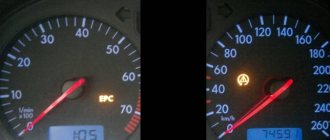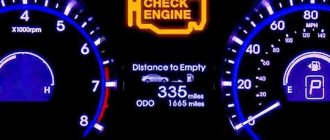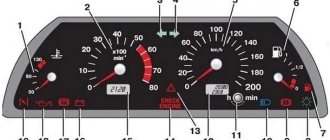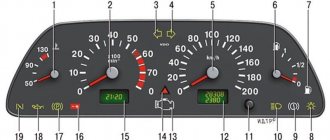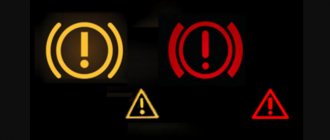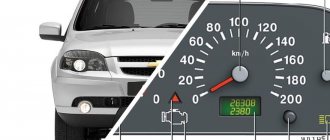Almost all new cars are equipped with an electronic engine management system, which often displays a Check engine error on the instrument panel. Translated from English, a check is a check, and an engine is an engine. Therefore, it is easy to guess that the emergency light indicates some problem in the operation of the power plant and the need for diagnostics.
general information
There are many reasons why the check engine light comes on. The error appears on the dashboard suddenly and without warning, and it is not easy to determine what led to this. And even if the vehicle is equipped with automatic diagnostic tools, such as in BMW, Porsche, VW or Audi, which scan the vehicle systems for failures, it is impossible to find the source of such an error without a technical inspection.
The check engine sign means absolutely nothing to the average motorist, so you need to visit a service center as soon as possible and check the engine. However, in some cases, you can find the source of the error and eliminate it at home. To do this, you need to understand the key reasons for the notification and how to solve them. Timely diagnostics are a good way to return your car to its previous performance, saving money.
Blue light bulbs
The blue light sign on the control panel instrument is not common; in many cars these indicators are green. However, if your car has them, you should know what they mean.
We have already written above that in terms of significance, such signals are equated to green ones, however, there is a small nuance. As a rule, the blue color of a light bulb does not portend trouble, does not mean a breakdown or problem, however, it should be responded to. In other words, this is not just service information, as in the situation with the turn signal on, but a signal that requires taking some action.
- The high beam headlights are on (you are blinding oncoming drivers);
- The engine is not warmed up to the optimal temperature (it is better to wait or drive slowly);
- And etc.
Replacing the oxygen sensor
The appearance of the “check car” message can be caused by damage or improper operation of the oxygen sensor (lambda probe). This element is an important part of the exhaust gas treatment system, which monitors the volume of remaining oxygen after combustion of the fuel-air mixture. the lambda probe fails,
- Sudden increase in fuel consumption.
- Reduced power of the power plant.
Modern cars are equipped with two or four oxygen sensors, so you will have to use an error scanner to determine the damaged part. If you have such a device in your garage, then checking the engine will be simple.
There are many reasons that cause damage or malfunction of this sensor. One of the most common is coating the part with oil soot, which prevents normal readings. As a result, fuel consumption begins to increase, and the exhaust system emits large amounts of harmful CO2.
When faced with such problems, you need to immediately change the oxygen sensor, otherwise another component, the catalyst, may fail. Repair of the latter is more expensive, which is due to the presence of precious alloys in its composition. And if several catalysts are installed in the car at once, then the total cost of repairs can reach 90,000 rubles. Such significant costs can be avoided if the sensor is replaced in a timely manner.
A new element is also not cheap, but its purchase will cost hundreds of times less than repairing the entire exhaust gas converter system. It is not difficult to replace an element with your own hands. To do this, it is enough to determine where the lambda probe is located and remove it to install a new one.
You may also be interested in: How to choose a lubricant for calipers and guides
Catalytic converter - what is it for?
Car designers are increasingly paying attention to reducing harmful emissions.
To achieve this, the power supply systems of power plants are being modernized in order to achieve the lowest possible fuel consumption, without affecting power performance.
Also, more and more cars are equipped with catalytic converters installed in the exhaust system.
The essence of the catalyst's work comes down to the breakdown of harmful elements into harmless ones through chemical reactions.
The catalytic converter consists of a housing, inside of which active catalysts, the so-called bobbins, are placed.
Nowadays these bobbins are often made of ceramic, but some are also made of metal.
The reel contains a large number of honeycombs through which the exhaust gases pass.
But ceramics do not enter into a chemical reaction; for this purpose, the surface of the honeycomb is covered with a layer of noble metals - platinum, iridium. Thanks to these metals, a reaction occurs, which reduces the harmfulness of car emissions.
The operating efficiency of this device depends on the temperature - the optimal temperature is considered to be from 300 degrees, so there is also a heat-insulating layer inside the housing, and the element itself is placed as close as possible to the exhaust manifold.
You can read more about the design features of the catalytic converter, as well as the principle of its operation, here.
One of the main disadvantages of the catalytic converter is its relatively short service life. On average, it is designed for 100-120 thousand km, after which it becomes inoperative.
Checking the fuel tank cap
When trying to understand why the check engine light is on, car owners consider worst-case scenarios, but do not pay attention to minor breakdowns. These include loss of sealing of the fuel system due to deformation or improper fixation of the tank filler cap. With such a defect, the error icon may light up suddenly. If the system is not properly sealed due to air leaking through the cap, fuel consumption will increase and a Check Engine notification will appear on the dashboard.
If, after the indication lights up, the car does not lose its previous power, and there are no sound changes in the operation of the power plant (knocking, humming, creaking), you must perform the following actions:
- Check the gas tank for leaks. If the filler cap is damaged, it must be replaced.
- Check that the cover is securely fastened. If the cap is not tightened sufficiently, air will enter the fuel system, causing the indicator to light up. Just tighten it all the way and then continue driving. If you do everything correctly, the error will disappear after some time.
Popular myths
Varieties
Some people deliberately get rid of the catalyst, others deliberately ignore the clogged unit. All this caused the spread of myths.
- By removing it, the engine gains power. A misconception that arose for unknown reasons.
- The engine cannot “breathe” normally due to the catalyst. Absurd. It functions quite well if the cat itself is in working order.
- A clogged element ensures a more environmentally friendly ride. Another myth, the origin of which can only be guessed at. Rather, on the contrary, a clogged device harms nature and your car even more.
Therefore, monitor the condition of the catalyst on the VAZ 2114, check its functional condition, and if necessary, replace it with a new one or replace it with a flame arrester. Both options have shown their effectiveness.
Today we will talk about signs of catalytic converter failure. Many car owners believe that this device is eternal, but unfortunately this is far from the case. But first things first.
Exhaust gas catalyst maintenance
The task of an automobile catalyst is to clean exhaust gases from toxic impurities, which is required by environmental standards. The element converts carbon monoxide and other hazardous substances into harmless compounds, so the exhaust becomes cleaner. And if the catalyst malfunctioned or was completely damaged, this will be displayed on the instrument panel in the form of a Check engine indication. Also, a breakdown may be accompanied by a decrease in vehicle power by approximately 2 times, which will worsen the previous acceleration dynamics.
The reasons for catalytic converter failure vary. The most common ones include the following:
- Lack of regular technical inspection.
- Damage to the oxygen sensor and untimely installation of a new one.
- Worn spark plugs.
If the last two elements fail, the carbon monoxide mixture remains harmful, full of toxic impurities. This composition leads to severe overheating and then damage to the catalyst.
If a part becomes faulty, you will have to stop driving the car because the motor will not be able to function normally and a corresponding notification will appear on the dashboard. In addition, catalyst wear will cause increased fuel consumption and reduce the normal thrust of the power plant.
Buying a new catalyst is an expensive investment, but it is inevitable. There are alternative solutions in the form of installing a flame arrester, but this option cannot replace a failed unit and it has disadvantages. Without experience in carrying out repairs, it is better not to start it yourself. Instead, the task should be left to a professional auto mechanic.
It will also be interesting: Self-flushing of a car cooling system with citric acid
Spark plug
The “check” sign on the instrument panel also lights up when the spark plugs or high-voltage wires are worn out. Without these elements, the process of igniting the fuel mixture will become impossible, since the spark plug will not be able to produce a normal spark. The following problems may indicate damage to this element:
- No spark.
- Unnatural spark interval.
Such failures lead to improper operation of the power plant, which will be felt when accelerating from a standstill. The average service life of spark plugs in modern cars is 150 thousand km. Models produced before 1996 need to be replaced every 25-30 thousand km. However, the established operational life may be reduced under the influence of various factors. This is primarily due to the low quality of fuel and the driver’s driving style.
If the spark plugs have not been replaced for a long time, and serious malfunctions are felt in the engine, you need to change them as quickly as possible. It is important not to postpone such work until the distant future, as this will entail unjustified financial expenses. New spark plugs are inexpensive, and you can replace them yourself.
After such a simple repair, the quality of engine operation will significantly improve, and fuel consumption will return to normal. To change the part, just open the hood and unscrew the old spark plugs with a regular spark plug wrench.
In addition to these elements, high-voltage wires that supply sparks to the spark plugs can also fail. Therefore, they also need replacement and maintenance. Correct and timely replacement of spark plugs will extend the life of important components of the car and make their work coordinated, reliable and of high quality.
Other reasons
The appearance of the Check engine sign often happens after a recent refueling at a gas station. In this case, the engine loses speed and malfunctions without any hint of serious damage. The culprit of the unpleasant phenomenon may be low-quality fuel or its incompatibility with a specific type of engine.
Faced with such a problem, the electronic control unit will record the appearance of detonation and various disturbances during the combustion of the mixture, which will be displayed as a Check engine error. This problem can be solved very simply: just add high-quality gasoline or diesel fuel to the fuel poured into the tank and the error will disappear on its own.
But if the quality of the fuel is critically low, you may have to drain it, cleaning the entire power system. If the error does not disappear even after such radical solutions, you have to reset it using software using special equipment.
Also, overheating of the power plant or a decrease in oil content in the internal combustion engine can cause the indicator to light up. In this case, you need to estimate the current engine temperature. If there are no signs of overheating, it is enough to check the engine oil level and its condition. At a normal mixture level, the engine will operate without external knocks and sounds, both at idle and under active load.
You may also be interested in: Choosing car seat covers
Considering the reasons for the appearance of the “check” sign, it is impossible not to mention the engine tripping. The problem develops against the background of damage to the spark plugs, high-voltage wires, coils and other elements of this system. It can also occur when fuel is not injected correctly into one of the cylinders.
Tips for the driver
The list of reasons that cause the Check engine light to come on is very extensive. If you make one general list, it will include the following items:
- Low quality fuel mixture. The problem is solved by draining the fuel or diluting it with a better product.
- Damaged or worn spark plugs, abnormal gap between side and center electrode. In case of such a breakdown, it is necessary to check and clean the elements or replace the set of spark plugs.
- Defects in high-voltage wires. If an insulation breakdown occurs in these elements or the contacts are damaged, the spark supply will be suspended. You will have to replace the spark plug wires.
- Problems with the ignition coil. This unit also needs to be carefully checked for any problems.
- Malfunctions in the operation of fuel injectors. The problem results in poor fuel delivery, which prevents the engine from operating normally.
- Fuel pump failure. Damage to this element is accompanied by insufficient fuel pressure. The problem is caused by contamination of the pump mesh and deterioration of the filter throughput.
- Problems with the catalyst and lambda probe. If one of the specified nodes stops coping with its tasks, a corresponding error notification will appear on the instrument panel. On some car models you can remove these elements, but on others you have to buy new ones. Such repairs are not a cheap service, but they are inevitable.
- Incorrect operation of important sensors. If individual elements of the ECM stop functioning normally, this will be accompanied by the appearance of an error on the display panel. We are talking about the camshaft position sensor, speed sensor, mass air flow sensor and others.
In general, you can understand the reason for the Check Engine light coming on at home. Sometimes it is insignificant and practically does not affect the operation of the power plant, but sometimes it is accompanied by serious engine malfunctions in the form of loss of power or sudden stopping of the machine.
However, the cause of the error may be the ECU itself, which has been disabled. You cannot fix such a breakdown yourself; you will have to show the car to a workshop employee. And the faster this is done, the more successful and cheaper it will be to restore the car.
Breakdowns and their signs
Typically, this element begins to “strange” when it travels about 150 thousand kilometers. That is, this is more likely an age-related problem with the car.
Standard and Modified
Typical signs that the catalyst is clogged are:
- The car's dynamics deteriorate significantly and noticeably;
- The engine starts with problems;
- There is a characteristic smell of sulfur in the cabin;
- The engine is unstable at idle.
If the car stops driving normally, it is advisable to immediately check the condition of this device. Alas, this cannot always be done in a garage environment, since special equipment and devices are required. But there are still two ways.
- Replace the lambda probe with a pressure gauge. Start the engine and check the pressure. If it is more than 0.5 atmospheres, things are bad.
- In the second case, you will need a remote pyrometer. If the catalyst is working normally, the temperature of the pipe before it will be higher than after it. But at the same temperature, this indicates the destruction of the honeycomb and a violation of the flame extinguishing function.
The second method allows you to obtain indirect data, so the pressure must be checked in any case. If a breakdown is detected, the catalyst must be replaced.
